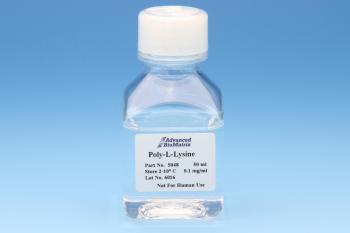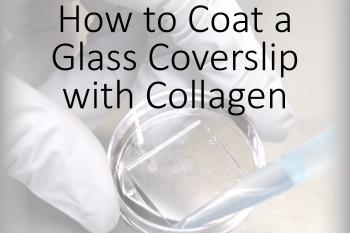Adhesion Peptides / Proteins
Unique Application for Adhesion Peptides
Collagen is used for enhanced cell attachment across a wide variety of platforms, including on glass coverslips. With standard collagen coatings, the coating and cells may detach from the glass surface during long-term culture. To improve attachment of the collagen to the glass, first coat the cover slip with Poly-L-Lysine #5048 or Poly-L-Ornithine #5058 as described below.
1. Prepare Poly-L-Lysine (#5048) or Poly-L-Ornithine (#5058) at 0.1-1 mg/ml.
2. Dispense sufficient solution to the surface of glass cover slip to completely coat with liquid.
3. Incubate 2 to 24 hours at room temperature.
4. Aspirate remaining solution and wash cover slips 3 times with sterile water.
5. Pool collagen solution at 100 μg/ml over surface of cover slip (collagen should be at ~pH 2-3 at a concentration of ~50-100 ug/mL).
6. Incubate 4 to16 hours and then aspirate remaining solution.
7. Rinse once with media and seed with cells.
Recommended collagen products for coating glass coverslips include PureCol® Type I Bovine Collagen #5005, VitroCol® Type I Human Collagen #5007, or Type IV Collagen #5022.

Advantages of Poly-L-Lysine, Poly-D-Lysine and Poly-L-Ornithine
PLL, PDL, PLO help facilitate cell attachment to plastic and glass surfaces by creating a synthetic, xeno-free, positively charged surface which electrostatically attracts cells which carry a negatively charged membrane.
They also offer an attractive coating for many cell types, including neuronal SC's, iPSC neuronal progenitors, neurons, oligodendrocytes, dorsal root ganglia, cardiomyocytes, MCF7, CHO, COS7, HEK293, 3T3, and PC3 cells.






